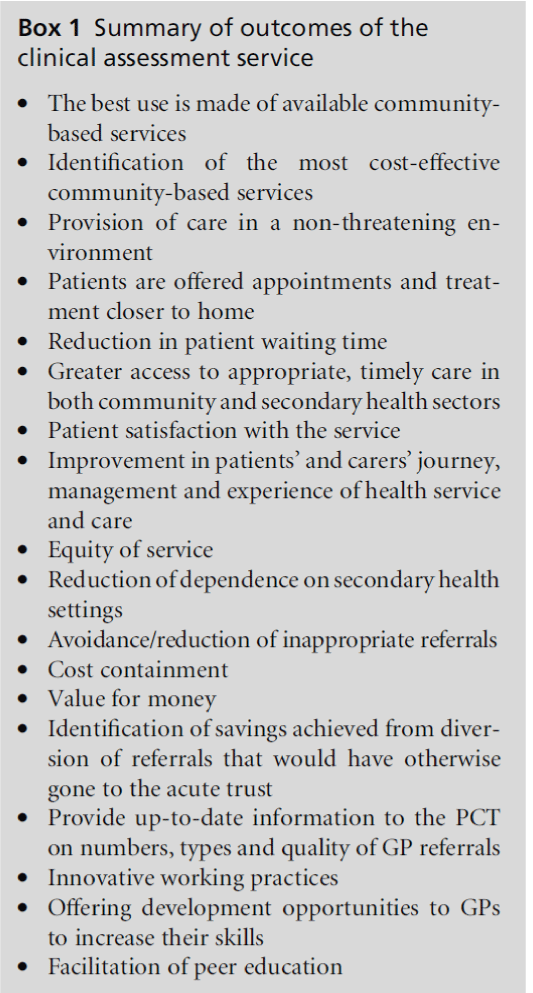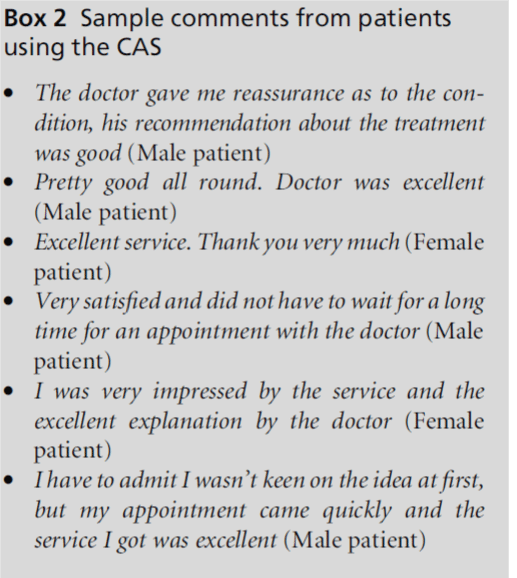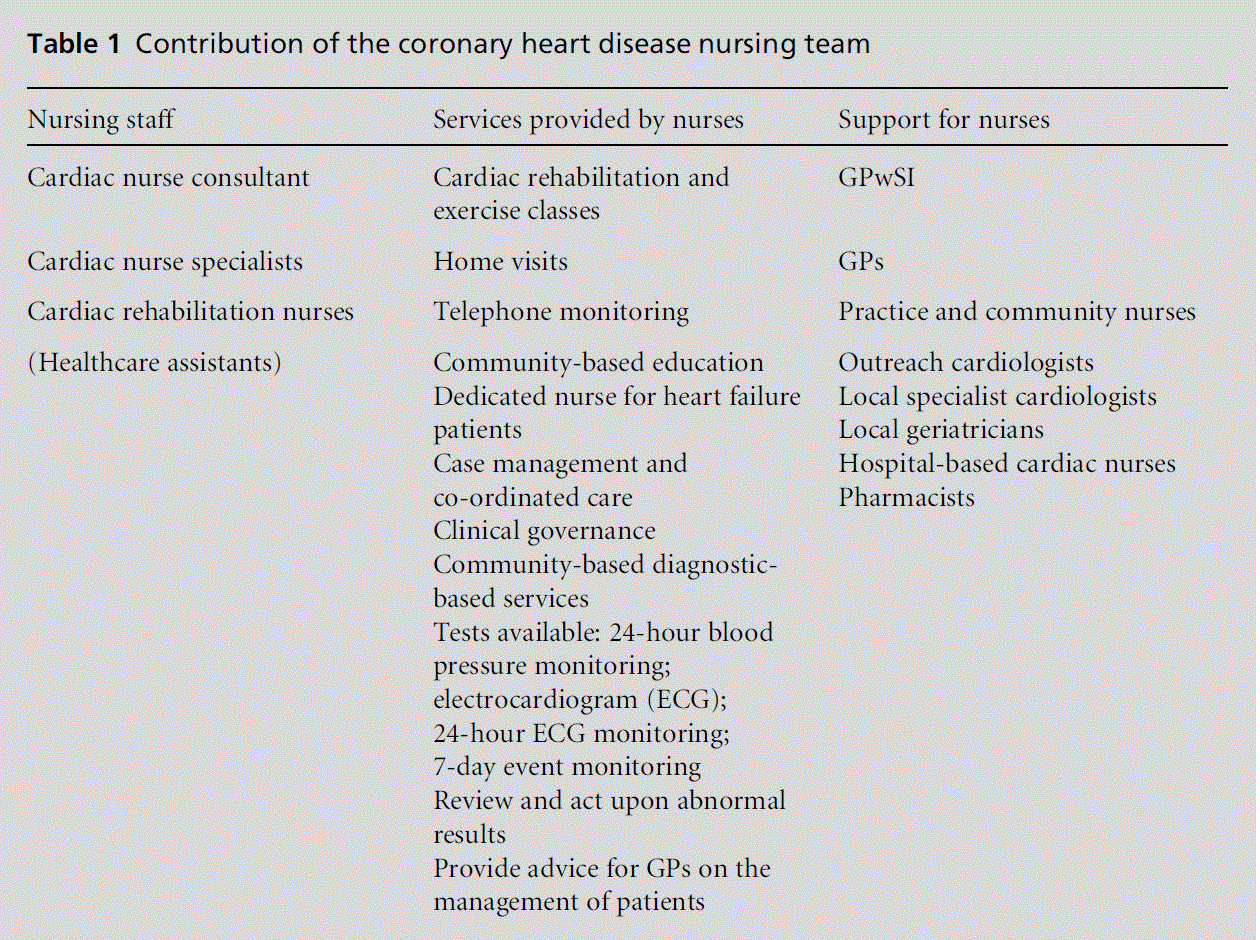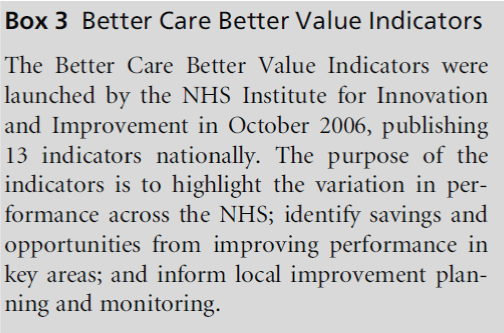Quality Improvement Report - (2008) Volume 16, Issue 2
Reader in Primary Health Care, CRIPACC, University of Hertfordshire, UK
Mary Cleary BA PGDip
Acting Head of Continuing Care
Andrew Bland MSc BA
Acting Director of Commissioning
Anna Donovan
Head of Practice Based Commissioning
Harrow Primary Care Trust, Harrow, UK
Amol Kelshiker BSc MBChB FRCGP
General Practitioner, Pinn Medical Centre, Harrow, UK
Received date: 3 December 2007; Accepted date: 8 January 2008
The redesign of healthcare services in Harrow Primary Care Trust is due to a number of drivers including: centrally imposed targets as outlined in various policy documents; shifting the balance of care; service delivery in a challenging financial climate; response to national consultations which indicate that patients want services nearer to home; and local and national knowledge of providing different types of services. A local enhanced scheme was devised by the trust to support general practitioners to follow care pathways using evidence-based literature, best practice and discussions with clinicians, nurses and patient representatives. The result was an ambitious and innovative service which has attracted attention from neighbouring London primary care trusts, which are seeking to replicate the model.
cost containment, multidisciplinary working, patients, service redesign
Key strategies in the vision of Harrow Primary Care Trust (PCT) include improving the population’s health and providing high-quality healthcare services. These twin goals accord with current government policies to modernise healthcare, place patients at the centre of healthcare, contain costs and redesign services.[1–6] The concept of redesigning services means that the organ-isation of health services should align with the required resources, so that these are available in the right place and at the right time. It also means that the govern-ment’s policies are designed to ensure that services are proactively shifted away from secondary care into primary care and that the cost of care is also reduced. Since 2000, policies have emphasised the need to introduce greater plurality and diversity of healthcare provision within England.[1–6] The national target to achieve an 18-week maximum wait from referral to commencement of treatment by December 2008,[5] means that the NHS has to be creative in both pro-viding capacity and improving efficiency in key clini-cal disciplines. An additional challenge for the NHS within the target is to give patients a choice of where they wish to be treated, while simultaneously improv-ing their experience of healthcare.
This paper outlines the processes undertaken to provide a new type of service – a clinical assessment service (CAS) – to the borough’s population. It focuses on the reasons for, and processes of, the introduction of the service. Issues relating to multidisciplinary work-ing – particularly the contribution of nurses, equity of service and value for money – are addressed. Lessons learned are highlighted. that there was a Harrow GP with expertise in this area who was willing and available to develop this service within the community. Discussions at this initial stage about the development of a headache service were held with local hospital consultants and the relevant GP. These discussions were led by the SRIT, and a key concern for them was to endeavour to get cost-effective, high-quality, evidence-based healthcare nearer to patients’ homes as well as meeting government tar-gets.[5] In tandem with these developments, the PCT facilitated additional access to computed tomography (CT) scanning, which could be used for primary care patients thus reducing the waiting time for this pro-cedure. This would be available to all GPs following the development of referral protocols, thereby ensur-ing that the investigation was performed on the most appropriate patients and therefore minimising un-necessary referrals to the neurology service. Care path-ways were also developed to improve management of patients by their own GPs prior to referring to special-ist care, thus reducing the need for repeated follow-up appointments.
The discussions led to the development of a head-ache service, including the production of a patient information leaflet about the service. The service was initially located within the local hospital where there was a consultant neurologist. A GP with special interest (GPwSI) worked alongside the consultant neurologist who triaged patients to be seen by the GPwSI. The idea of GPwSIs was first mentioned in The NHS Plan, which envisaged that GPs with an interest in a clinical discipline would take referrals from fellow GPs, hence reducing patients’ waiting time for appointment and healthcare and providing a more holistic experience for the patient as well as contributing to cost contain-ment.[1]
Rationale for developing a clinical assessment service
The evidence base for the development of a redesigned service began in August 2005, as a result of feedback from patient surveys about the long waiting times – approximately 10 months – for neurology appoint-ments. It was apparent from reviewing the case mix of patients that were being referred that a large number were on long waiting times for hospital-based out-patients’ services, when they could have been treated more quickly and more appropriately in primary care using general practitioners (GPs) with expertise in headache management.
Discussions were held with PCT staff and clinicians of the Service Redesign and Implementation Team (SRIT) where it was decided to proceed with the modernisation of care pathways in a community setting for patients with headache. It was fortunate
Development and piloting of CAS
The headache service was introduced as a three-month pilot, located in the local hospital. The result of the decision to locate the service in the local hospital was an under-utilisation of the GPwSI’s skills, as only a limited number of cases were being referred to him; thus this arrangement was inappropriate for both the GP and the PCT. At the conclusion of the pilot, a questionnaire regarding accessibility and quality of service was sent to each patient seen under the new arrangement. Content and descriptive analyses of patient feedback showed a high degree of satisfaction with the service (see Figure 1), although from the PCT’s perspective the service was not cost-effective and was still based in the hospital as opposed to being in the community. These issues are echoed in the literature on GPwSIs.[7,8] The analysis of the patient surveys strongly reinforced the original premise that patients wished to be treated more quickly and more locally, and the SRIT was keen to find a way of providing services closer to the patient’s home in a cost-effective way. At this juncture the identification exercise for clinical expertise in Harrow and the specialties to be introduced took place – cardiology and dermatology were the first two identified. Given the high incidence of cardiovascular illness in Harrow, very long waits for hospital outpatient appointments, investigations and high follow-up ratio, it was particularly important and appropriate that services provided to patients could, and had to, be modernised. The advances in technology enabled a number of previously hospital-based cardi-ological investigations to be carried out more locally and closer to patients’ homes, thus reducing dependence on hospital settings. Furthermore, skin complaints account for up to one-fifth of all GP consultations in the UK.[9] In addition, the growing elderly population, both locally and nationally, for whom skin complaints are an important cause of morbidity, necessitates the development of a community dermatology service. Such a community-based service has been identified as having the potential to improve services for patients and reduce waiting time and, implicitly, the cost of treatment.[9,10] The development of these community-based services makes access for patients easier.
Lessons learned
As part of Harrow PCT’s financial recovery plan, the SRIT reviewed various models of referral manage-ment,[11–13] and undertook visits to PCTs that had introduced management referral centres. These centres accepted referrals from GPs and screened them for the levels of information provided and the suitability of the referral. The review of referrals was undertaken by nurses or GPs. These models have had variable success in that they may have introduced an element of ‘peer review’ into the referral system, which led to a reduc-tion in outpatient attendances, but had been receiving poor publicity from GPs and patients because they were perceived as a means to delay referral for further care.
Harrow PCT’s Professional Executive Committee (PEC) was determined that any changes implemented must lead to an improvement in the care delivered to patients by providing more timely access to evidence-based specialist care closer to patients’ homes. They also stipulated that any service delivery change must lead to an improvement in the training and education of all primary care professionals in that specialty by implementation of care pathways and care protocols.
Harrow GPs were keen to have a model of referral that utilised the multiprofessional skills in the com-munity. The view of the PEC and the SRIT was that referral management should only be introduced where skills were available to ensure a practitioner with specialist skills undertook the triage of referrals, and where an appropriate alternative to a hospital appoint-ment could be offered. Their belief was that this type of system would add value to the patient’s journey and offer the potential to make the most effective use of the skills and knowledge of practitioners with special interest. Thus, evidence from patient feedback, from the headache pilot, referral management centre visits and the literature,[11–14] resulted in the development of Harrow’s specific type of CAS. A decision was made by a multidisciplinary team to provide alternative community services in high-demand specialties. The SRIT, in collaboration with relevant GPs and other healthcare personnel, combined their knowledge of the literature on service redesign[15–17] with a pragmatic approach to developing a new service for patients registered with a Harrow GP. The drivers contributing to the PCT’s decision to redesign services were:
• centrally imposed targets as outlined in a number of policy documents[1,5,18,19]
• shifting the balance of care
• service delivery in a challenging financial climate
• response to national consultations which indicate patients want services nearer to home
• local and national knowledge of providing different types of services.
In tandem with the redesign of services, a local enhanced scheme was devised by the PCT to support GPs to follow care pathways. All care pathways were developed using evidence-based literature and best practice; for example dermatology was developed in conjunction with discussions with GPs, nurses, sec-ondary care clinicians and patient representatives.[9,20,21]
The service model was changed from that used under the pilot scheme (discussed above) to one that allowed the GPwSI to undertake the triage and to operate from a community setting supported by consultant men-torship. The principles adopted for Harrow CAS meet the guidance suggested by the British Medical Associ-ation for referral management schemes.[22] A five-step structured approach to the redesign of service was employed,[17] and these steps are outlined next.
Service redesign steps
1 Process mapping
This was undertaken to capture the patient’s journey of care. Bottlenecks and unnecessary journeys were identified. This procedure is patient focused and helps understanding of the patient’s experience of care delivery.
2 Involvement of key stakeholders and visioning
This included clinical staff, e.g. PEC commissioning group, which has a patient representative as a mem-ber, GP forum, senior management from secondary care and from the PCT, patient representatives and support staff. The SRIT also communicated by email and letters to GPs and nurses. Personal visits by mem-bers of the SRIT were made to all general practices in the borough to get their engagement in the new service.
The involvement of appropriate clinical and man-agement views in redesigning of the service is in line with government recommendations as outlined in Commissioning a Patient-led NHS.[4] A presentation was made to the practice managers’ forum to inform them about the new service and to incorporate their views in the implementation of the service.
3 Redesign of service
This was a patient-focused, clinically led endeavour, with facilitation and assistance from clinical and support staff. The purpose of the service is twofold:
(i) to accept GP referrals for specialties where alterna-tives to hospitals services exist, and (ii) to provide a means whereby these referrals can be triaged by appro-priate clinicians to the most apposite service. Box 1 provides a summary of the outcomes of the service. A strong feature of Harrow’s health economy is the high quality of their GPs, many of whom have additional qualifications in the relevant specialties on offer in the redesigned services; others have worked as clinical assistants in hospitals.

The PCT advertised and recruited GPwSIs from the local GP population. Mentoring arrangements for the GPwSIs were arranged with the local hospital consult-ants. This ensures that Harrow always has a local resource of expertise upon which to draw.
4 Introducing the new service
The CAS office started accepting patient referrals from 5 December 2005, with bookings for the initial GPwSI clinics starting in January 2006, i.e. cardiology and dermatology. The initial view of the SRIT was to run the service for three months as a pilot. Patients seen by a GPwSI during the three months were surveyed; Box 2 highlights extracts from some of their comments.

Leaflets were printed about the service, including access information about CAS in the 10 most fre-quently spoken languages in the borough. The SRIT also has a number of staff who can communicate in French, Gujarati, Hindi, Kutchi, Punjabi, Swahili and Urdu. This is advantageous given the high ethnic mix in the population. The leaflets were distributed to all healthcare facilities in Harrow and advertised in patient forum newsletters and the local newspapers, as well as being posted on the PCT’s website. The wide publicity endeavoured to inform patients and the public. Patients were given a choice of areas where they could be seen.
5 Implementation
This stage included continued provision of support, monitoring the benefits of the service to patients, clinicians and community staff, the development of further redesigned service innovations, and sustain-ability of the benefits of those innovations.
Although the PCT was experiencing significant financial challenges, given the success of the CAS pilot the PCT decided to fund a ‘spend to save’ scheme and to make the CAS a key element of its financial recovery and demand management plans in 2006/2007. Sim-ultaneously, the PCT voluntarily entered into a recov-ery plan with an external body in 2006/2007, and the CAS was fundamental to its plan. The purpose of the arrangement with the external body was to (i) improve the organisational effectiveness by creating an organ-isational financial strategy; and (ii) ensure that the PCT will be able to successfully manage future change programmes by implementing effective management structures, processes, training and support.
As part of the work programme for the recovery plan, it was decided to extend the numbers of spe-cialties covered by the CAS. The areas chosen were ones where the data showed long waiting lists and high demand. It was part of the consideration that the extension of services to be offered would be ones where the PCT had evidence to show that they could appropriately divert patients to community services.
The new services that were implemented in 2006/ 2007, in addition to cardiology, dermatology and neurology (headache), were ophthalmology, gynae-cology and minor surgery. It is planned that another three specialties will be added to the list of com-munity-provided services by December 2007. These are rheumatology, paediatrics and ear, nose and throat. At the end of 2007, this would give a total of nine specialties offered to patients nearer to their home.
Issues considered in the development of the clinical assessment service
Equity of the service
It is emphasised that all Harrow-registered patients meeting the clinical criteria, developed by the SRIT and approved by the GPwSIs, may be referred to the service. The clinical criteria are guidelines for referring patients to GPwSIs for a particular clinical discipline and include referral procedures, conditions that should not be referred to the service, practicalities of the service and advice about prescriptions. The CAS receives all routine referrals for the specialties discussed in this paper, and patients are able to make a choice of a GPwSI or practitioner with special interests (PwSI) appointment across several locations in the borough. The service has female and male GPwSIs for patients who prefer a particular sex, e.g. as in the case of gynaecology. This respects choice and potential cul-tural issues. The PCT also endeavours to offer early morning and late evening appointments to meet the needs of commuters. The PCT believes that the pro-vision of local services, near to patients’ homes will enhance equitable access to high-quality, clinically effective service and reduce costs.
The PCT makes use of several interpreting services: UK Asian Women’s Conference, an out-of-hours language line, which is a telephone interpreting ser-vice; and an emergency service accessible 24 hours. The service can also arrange face-to-face interpret-ation.
Critics of the CAS or referral management service argue that it is unclear how these schemes, which decide where patients will be treated following referral, fit in with the government’s central plank that patients should have a choice of a hospital.[23] Further, it is argued that the financial destabilisation of some sec-ondary care disciplines will remove any incentive for secondary care specialists to support the GPwSI role.[24] Thus the choice agenda and referral services may sit uncomfortably in some PCTs, particularly if services are developed with little consultation or input from clinicians.
Contribution of a multidisciplinary team
In addition to GPwSIs, there is a range of professionals involved in triaging referral and delivering community-based services, depending on the specialty. The initial triage and some treatment for ophthalmology are undertaken by optometrists. The PCT has a skilled mobile cardiac task force team of healthcare personnel working in a primary care diagnostic service for patients with coronary heart disease (CHD). These include nurse consultants and nurse specialists in cardiology, GPwSIs, allied health professionals, pharmacists and healthcare assistants who are supported by cardiologists from secondary care. The work and significant contributions of nursing staff to the success of CAS cardiology, and thereby assisting with meeting the government’s chal-lenging target of 18 weeks from referral to treatment, are presented in Table 1. The nursing staff are multi-skilled and are able to work across all integrated CHD services: senior nurses with specialist qualifications conduct CAS clinics and see their own patients (six patients per session) alongside a GPwSI and outreach cardiologist. Patients have access to CHD services either as separate units or as integrated care packages (see Figure 2).

In the year from January 2006 to December 2006, over 600 patients were referred to the CAS cardiology; this represented a 40% reduction in outpatient visits.
Value for money
The development of the CAS as a ‘spend to save’ scheme cost £241K in 2006/2007 and has led to sig-nificant reduction in outpatient referrals, giving the PCT a saving of £1.2 million in its first year (2006/ 2007); net resources freed up for alternative reinvest-ment for the same period were £919K, and the number of patients using the service was 5640. NHS Better Care, Better Values Indicators (see Box 3) show that Harrow was the 12th best-performing PCT in London for reducing outpatient appointments and was in the national top quartile for performance,[25] thus con-firming the success of the CAS. In addition to the benefits outlined in cardiology, 70% of dermatology activity has been transferred from hospital to commu-nity services. The costings for each of the community services are benchmarked against the tariffs for the relevant specialty. All redesigned services are estab-lished to ensure that the services are delivered at less than tariff price. There are disincentives for general practices that send less than 90% of their referrals through the CAS. This was agreed with practices in the practice-based commissioning designated enhanced services 2006/2007.

Harrow has seen a reduction in referrals across clinical disciplines as GPs become more confident in following pathways, and practices have improved on referral management. This represents a significant shift in how secondary services are delivered in Harrow.
The CAS in Harrow began its operation in December 2005 based on patient feedback and involvement with a range of stakeholders, in the light of operating within a challenging financial climate and in an effort to meet government targets.
The Harrow CAS is an ambitious and innovative development and has already attracted attention from neighbouring London PCTs, a number of whom are seeking to replicate the model. The SRIT is confident that there is great potential for this model to be widely used. It also has the potential to be established as a shared service across a number of PCTs, which would deliver even greater cost benefits and value for money by sharing the overheads attached to the administration and management of the service. It should also be borne in mind that a key driver for the redesign of services is cost containment. Harrow’s CAS was among six case studies used by NHS London in their Strategic Health Authority Annual Report 2006/2007 on service redesign to demonstrate ‘some of the best and most innovative pieces of work’.[26] The key to its success has been the whole-system approach to its implementation, in that stakeholders have been involved with the service redesign work. The expertise and close partnership working between clinicians, nurses and management have been pivotal in it success.
The Commissioning Directorate of Harrow Primary Care Trust would like to thank our Chief Executive, Andrew Morgan and the directors for their support in establishing the clinical assessment service. Thanks are due to the Directorate’s staff, clinicians, nurses, allied health professionals, support staff and patient rep-resentatives. They gave freely of their time and were helpful and willing to share their views and expertise. Special thanks go to Dee Hannah, consultant nurse.
None.